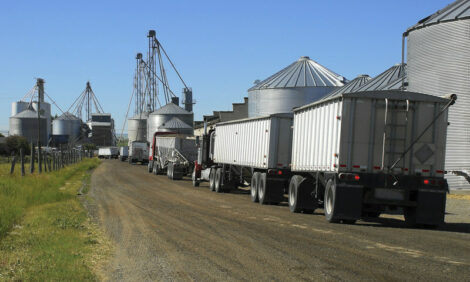Pork industry innovations take sow housing back to the future
Banff, Alta. - Everything old is new again - speakers at the recent Banff Pork Seminar reported that sow housing is coming full circle with a growing worldwide trend to replace gestation stalls with "loose" or group housing.
|
Need a Product or service?
|
|
Gestation stalls - where sows are housed and fed during pregnancy - offer the benefits of controlled management and have been common practice in modern hog production facilities for more than a decade. But perceived animal welfare benefits and technological innovations are driving a return to group housing systems, say Dr. Niels-Peder Neilsen and Dr. Harold Gonyou.
For producers, the good news is modern group housing is far more advanced than the outdated systems of yesteryear, they say. Research and development has spawned a range of systems that offer the best of old and new, with the flexibility to meet tailored productivity and management requirements.
"It's important producers realize there is more than just one group housing system - you can't make a blanket comparison between group housing and stalls," says Gonyou, an animal behavior researcher at the Prairie Swine Centre in Saskatoon. "There are more than 60 combinations of variables that go into designing modern group housing systems, each with their own benefits and drawbacks. Producers must decide what they want to achieve, then select the design that will most likely reach those goals."
Europe has taken the lead in shifting to group housing and offers some good examples for Canada, says Nielsen, who represents the National Committee for Pig Production, part of the Danish Bacon and Meat Council, the organization which represents Danish producers and processors and carries out research on their behalf.
It's estimated that half the gestating sows in Denmark will be group housed this year, he says. This is partially the result of new European Union legislation - all new hog production facilities started on or after January 1, 2003, are required to provide group housing for gestating sows.
"The Danish industry has been heavily involved in developing and evaluating new group housing systems for pigs since the early 1990s, and these systems have become increasingly popular," says Nielsen. "While there are still a number of issues that require further research and development, Danish producers have found it is possible to obtain a high level of efficiency with loose housing systems."
Selecting the best approach involves several key considerations, says Gonyou. In general, group housing offers increased mobility, socialization and choice for the sow, but this makes individual feeding and monitoring more difficult and heightens the risk of animals fighting and out-competing one another.
Modern group housing systems have potential to work just as well or better than stalls if designed properly, he says. Facility design, flooring and bedding, space allocation and staffing requirements all play a role, but the chief consideration is feed control.
"Most producers are naturally concerned with controlling feed intake," says Gonyou. "This was thought to be a major advantage of stall housing, but today's group systems now offer a full range of options for different levels of control."
Among the most innovative technologies are electronic sow feeders, which allow producers to program different feed levels and diets for each animal, he says. Each sow wears an electronic identification transponder in the ear, which is identified by sensors installed in the facility.
An example of a more basic system is one based on individual stalls that are used only for feeding, says Gonyou. Sows are allowed into the stalls for feeding, during which time they are locked in for their protection. All animals are typically supplied the same amount of feed, but producers have the option of supplying additional feed or supplements to individuals by hand.
"As in any system, it's important to keep analyzing and adjusting," says Gonyou. "Keeping good production records can provide valuable insight for improvements."
The Banff Pork Seminar, held annually since 1972, is one of the premier pork seminars in North America. The Seminar is coordinated by the Department of Agricultural, Food and Nutritional Sciences, University of Alberta, in cooperation with Alberta Pork, Alberta Agriculture, Food and Rural Development and other pork industry representatives. Full program and proceedings of the 2003 Banff Pork Seminar are available on the new Seminar Web site, www.banffpork.ca.
Source: Banff Pork Seminar - 23rd January 2003



















